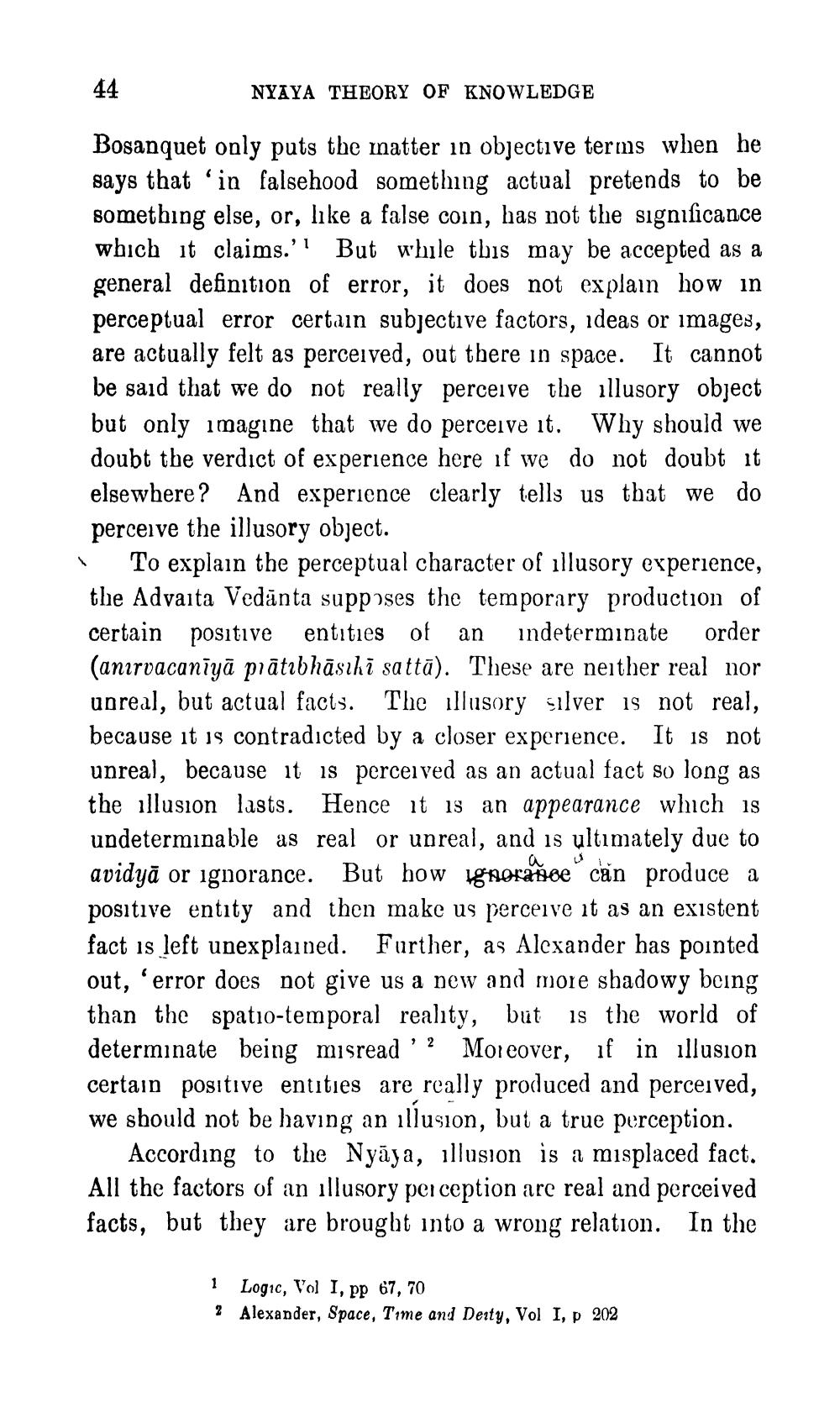________________
NYAYA THEORY OF KNOWLEDGE
Bosanquet only puts the matter in objective terms when he says that 'in falsehood something actual pretends to be something else, or, like a false coin, has not the significance wbich it claims.'' But while this may be accepted as a general definition of error, it does not explain how in perceptual error certain subjective factors, ideas or images, are actually felt as perceived, out there in space. It cannot be said that we do not really perceive the illusory object but only imagine that we do perceive it. Why should we doubt the verdict of experience here if we do not doubt it elsewhere? And experience clearly tells us that we do perceive the illusory object.
To explain the perceptual character of illusory experience, the Advaita Vedānta supposes the temporary production of certain positive entities of an indeterminate order (anirvacanīyā prātıbhāsihi sattā). These are neither real nor unreal, but actual facts. The illusory silver is not real, because it is contradicted by a closer experience. It is not unreal, because it is perceived as an actual fact so long as the illusion lasts. Hence it is an appearance which is undeterminable as real or unreal, and is ultimately due to avidyā or ignorance. But how ignorance can produce a positive entity and then make us perceive it as an existent fact is left unexplained. Further, as Alexander has pointed out, 'error does not give us a new and more shadowy being than the spatio-temporal reality, but is the world of determinate being misread'? Moreover, if in illusion certain positive entities are really produced and perceived, we should not be having an illusion, but a true perception.
According to the Nyāya, illusion is a misplaced fact. All the factors of an illusory perception are real and perceived facts, but they are brought into a wrong relation. In the
1 Logic, Vol I, pp 67, 70 2 Alexander, Space, Time and Derty, Vol I, P 202




